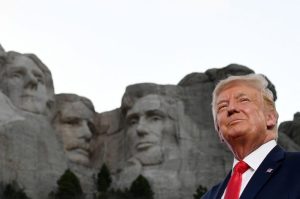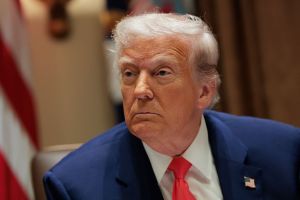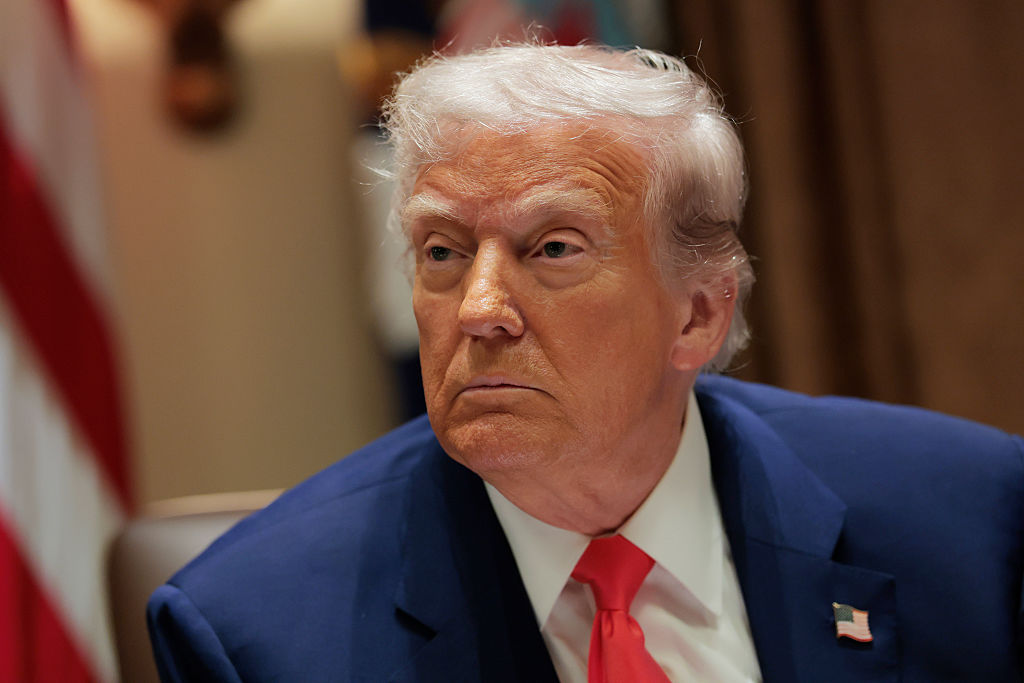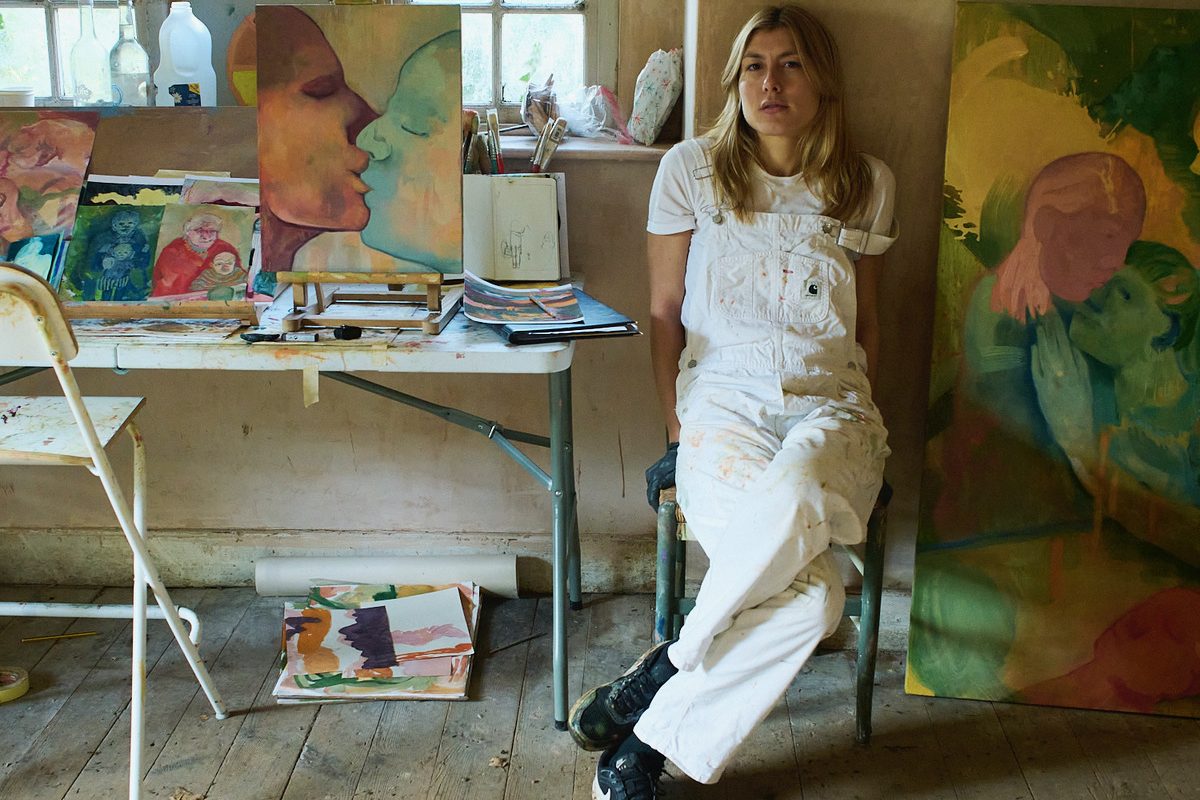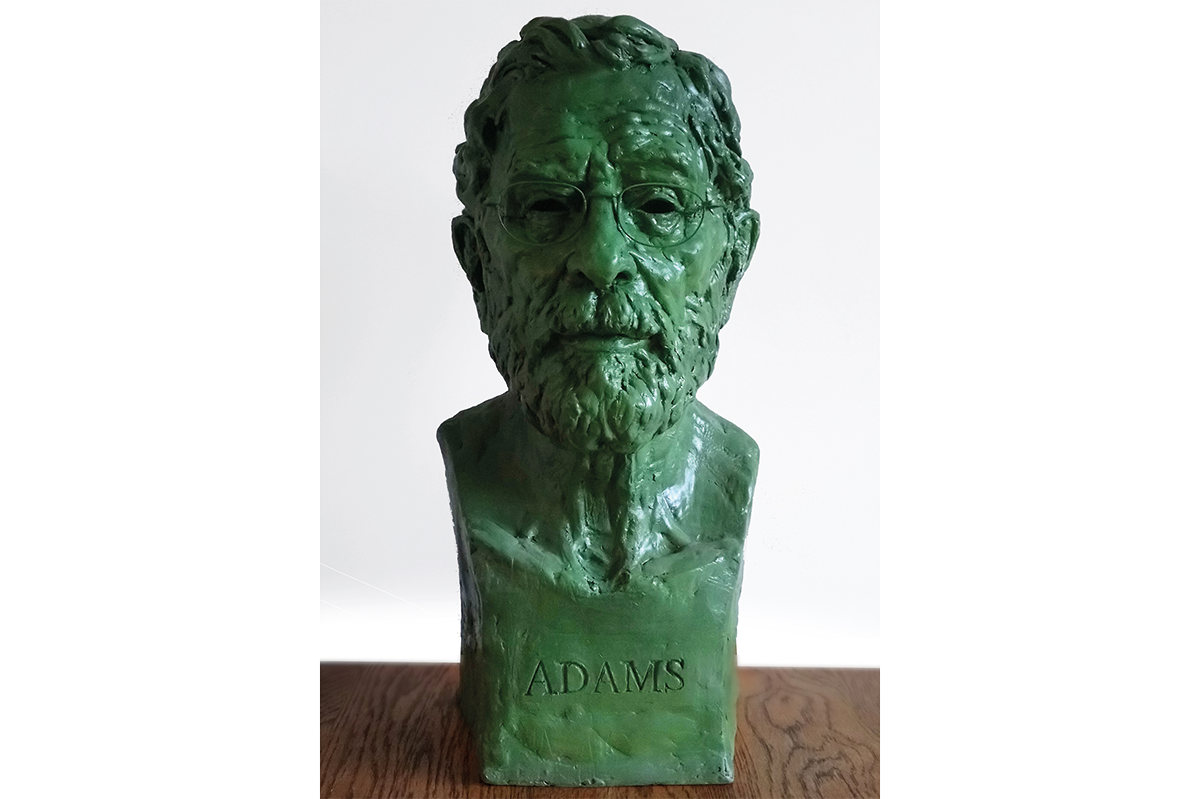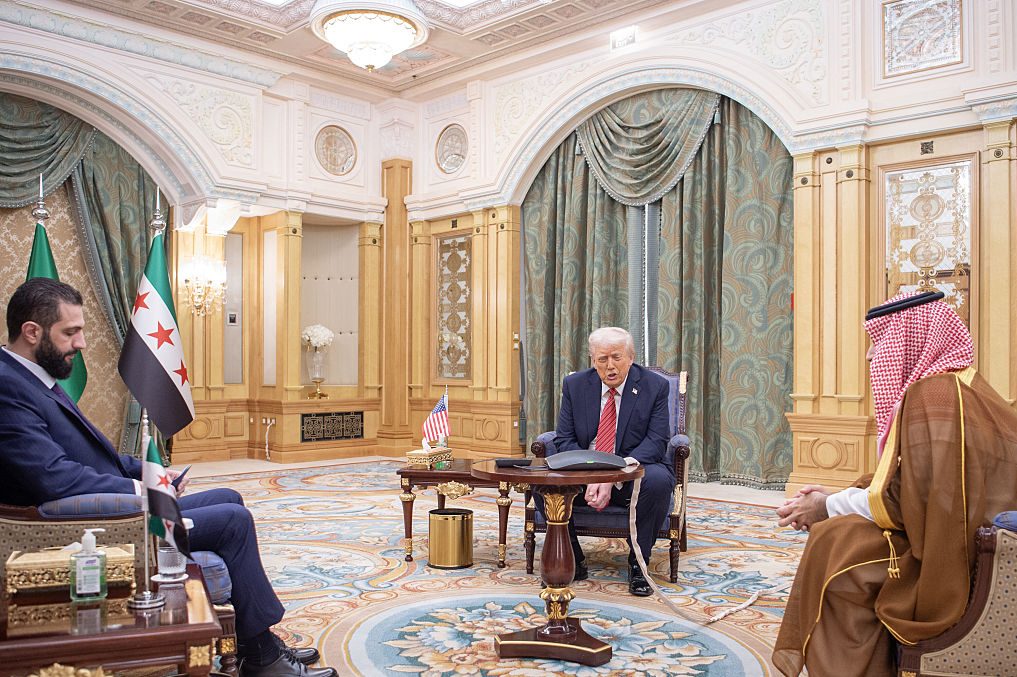The road from Erbil consists of one large, tarmacked lane, no separation marks, no shoulder, despite seemingly never-ending ascents and descents and a barrage of trucks carrying huge oil tanks. As soon as the mountains of the Iranian border appear, the cars form a bottleneck into Sulaymaniyah, the “cultural capital of Kurdistan.” It leads to a maze of circular streets, where finding anything — let alone an old tobacco factory turned arts center — becomes a challenge, even for two journalists armed with Google Maps and a local fixer.
Yet after some circling, a phone call, a bit of translating and the opening of two twelve-foot, light-beige metal gates, the artist Tara Abdulla appears, smoking a cigarette. Short and slight, with long, wavy black hair and a sly smile, in this conservative yet chaotic region Abdulla could be haram personified.
Abdulla leads the way to her studio on the fourth floor of the refurbished tobacco factory formerly known as XLine. She has been there for nearly three years. A former student of the Institute of Fine Arts in Sulaymaniyah, Abdulla was offered a studio in 2020 by Shero Bahradar, one of the founders of the “utopian artistic collective” XLine and incubator of modern art in Iraq. Two years later, Abdulla is one of the only artists who remains in the building. She creates in a gallery-sized room in which she hangs her photorealistic canvases — modern line paintings that reflect her feelings surrounding gender roles and the sculptures she uses in her installations.
Is it daring art? For an Iraqi woman, definitely. Is it Abdulla’s most controversial work? Not even close.
In 2020, Abdulla gathered nearly 5,000 pieces of clothing from women who had been abused, sewed them together and hung them across nearly four miles of her home city. The installation, “Mêyîne,” lasted only briefly — “I sent my message,” Abdulla says. “I put it up after midnight, so I wouldn’t be stopped, and people were shocked to see the dresses that women wouldn’t wear normally outside hanging in a very public place.” Within a day, a group of men set “Mêyîne” (which means “wait” in Kurdish) on fire. Abdulla had to take it down to prevent further attacks. But she wasn’t dismayed. Rather, she felt buoyed by the reaction.
“It was my dream to see someone make a fire and destroy [the work]. I said ‘look at my message, I am right about this society. I made my point.’”
Abdulla and her work perfectly illustrate the state of art in Iraq, a country currently finding its voice ten years after Americans left and about five years following the demise of the Islamic State. During those long, dreary years, in a country that once had its own “Baghdad School” of art, anything aside from decorative arts or portraits of Kurdish leaders was shoved underground or hidden in the back rooms of furniture and antique stores. Two decades after the first bombs dropped in Baghdad, the arts in Iraq are emerging, if not exactly flourishing, again.
When Muslim Arabs invaded Mesopotamia in 634, Baghdad became a center of Islamic civilization caught in the middle of two great powers: the Shi’a Safavids and the Sunni Ottomans who fought a series of wars over Baghdad and the region’s holy sites until the region came fully under Ottoman control in the seventeenth century. The most important principle governing the arts was aniconism: the religious prohibition of the representation of living creatures based on the belief that God is the sole author of life, and that any person who produces a likeness of a living being seeks to rival God. The drawing of inanimate objects such as trees and rocks or anything that does not possess a soul was permitted.
In the early twentieth century, when Picasso and Braque were sharpening their Cubism in Paris, Iraq did not exist as a nation. But at the end of World War One, the British drew Iraq’s modern borders and installed the Hashemite dynasty of King Faisal I to put an Arab face on their rule. Also, during this period, a group of Polish officers who had been part of the Foreign Legion, landed in Baghdad and introduced local craftsmen to European painting, which fostered greater public appreciation of art.
For many Iraqis, the modernizing influence of Europeans was welcome, particularly after hundreds of years of stagnation under the Ottomans. The government soon sponsored scholarships for Iraqi artists, allowing them to study at academies in Paris, Rome, London and Berlin. One of them, Faeq Hassan (1914-87) completed his studies at the École des Beaux-Arts in Paris and on his return to Baghdad founded the painting department at the Baghdad College of Fine Arts. In conjunction with his friend, the artist and sculptor Jawad Saleem, he formed al-Ruwad (the Pioneers Group) — the equivalent of European café society — which took the ancient and Islamic genres, as well as Western influence, and created art “for the people.”
But for the generation of Iraqi artists who came of age under Saddam Hussein, the unifying subject was the dictator, often depicted holding a sword or riding an Arabian horse. If Saddam was venerated appropriately and pleased with his likeness, artists could paint virtually whatever they wanted — from nudes to the Prophet Mohammed himself — and enjoyed what Natiq Al Alousi, an Iraqi sculptor who lives in Abu Dhabi, calls a “golden period.” While he crushed all political dissent, the dictator cultivated the image of a patron of the arts; the second Gulf War ended a flourishing arts scene.
After the US invasion in 2003, verdant landscapes, stylized portraits of peasant women, cubist pieces by renowned artists like Jawad Saleem and the realist still-lifes of Faeq Hassan were spirited away from the Saddam Center for the Arts, one of Baghdad’s most prestigious cultural venues. Other museums and galleries were looted. “We were a rich country and now we are very poor,” says Yousif Muhamid, an artist from Baghdad who now lives in Erbil. “To the West, I now have to say that you ruined this place. The problem is that we have thieves — the Americans brought all of these thieves to power — and they are stealing the money we need to build institutions.” Muhamid had been a colleague and close friend of Layla al-Attar, who led Baghdad’s Academy of Fine Arts during the first Gulf War and who created a floor mosaic of former president George H.W. Bush in the lobby of Iraq’s Al-Rasheed hotel in 1993 so that guests could walk over his face. The same year, al-Attar and her husband were killed by a US missile attack ordered by President Bill Clinton that missed its intended target and hit her house. Many of the city’s artists still don’t believe it was an accident.
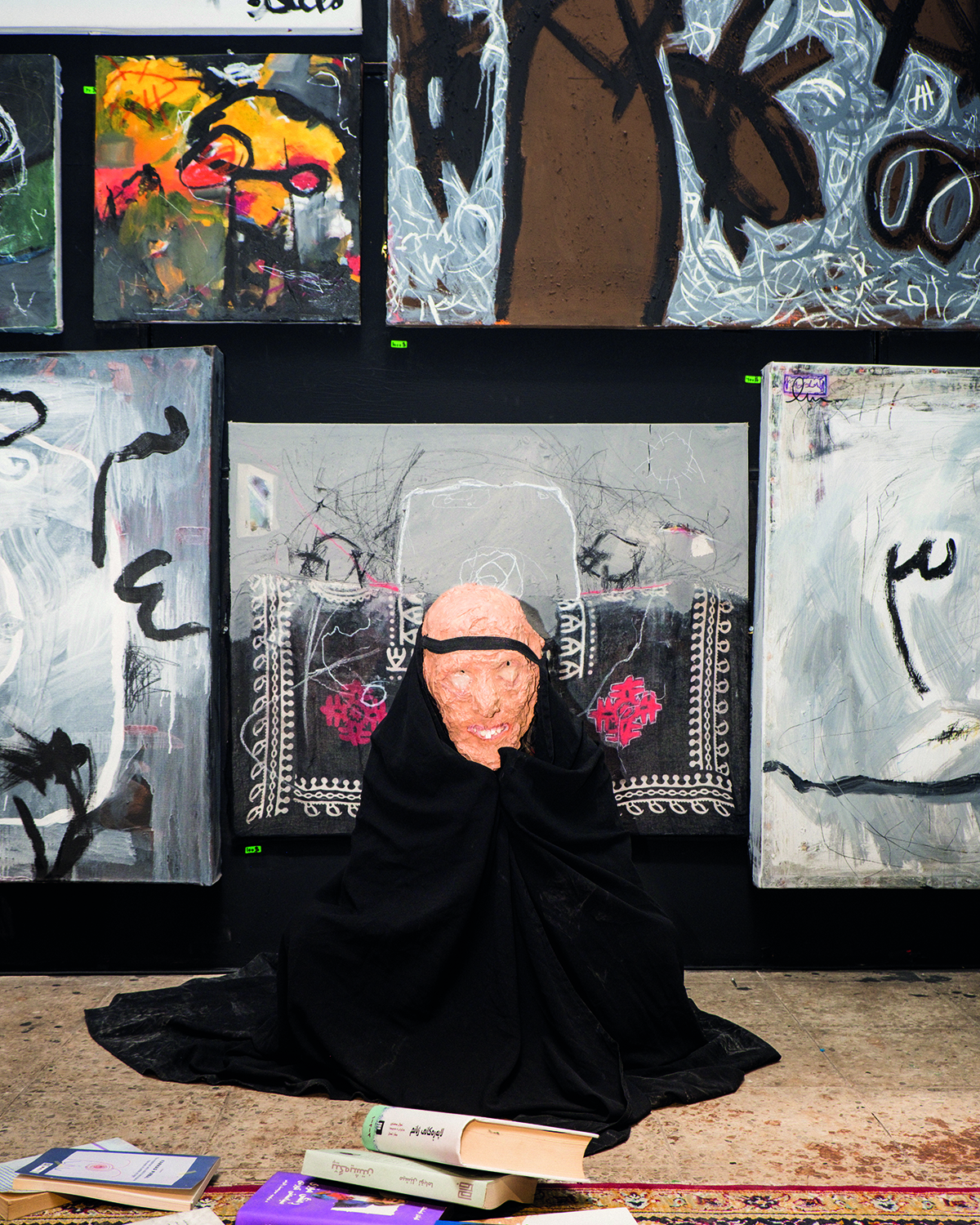
For someone used to the gallery scenes of New York or London, finding original art and its creator in Iraq is akin to Indiana Jones stumbling across the staff of Ra while looking for the Holy Grail. Mass-produced photographs and velvet paintings of the Eiffel Tower and Audrey Hepburn line the streets and souks of Erbil. While visitors seek authentic Iraq, anyone of means in Iraq wants anything that screams “Western.” A gallery mentioned online one day might be gone the next. After Saddam’s fall, Muhamid stayed in Baghdad and eked out a living by teaching undercover, putting on secret shows or stowing away his work in the backrooms of shops in the Green Zone which otherwise sold “Lawrence of Arabia” tchotchkes and bric-à-brac to Alliance soldiers. Alliance bombs and shooting squads were everywhere and any professional activity that overstepped basic survival ground to a halt. Anything seen as subversive, critical of the Americans or damning of whatever militia attempting to fill the power vacuum (al-Qaeda, Mahdi Army or Badr Organization) could put an artist in the crosshairs of a loaded weapon.
The work of serious artists during the US occupation offered the scant Iraqi perspective of “Shock and Awe” — a meditation on the brutality of the period. Distorted renderings of the famous toppling of Hussein’s statue in Firdos Square are a common theme, as are ghoulish figures amid primitivist outlines of fire. Many also juxtaposed slashes of black, sandy red, brown, glowing yellow and orange, Kurdish and Arabic script and Babylonian sketches with collaged elements, such as election ballots, pieces of the Iraqi flag and newspaper clippings.
Interested in this outpouring of art, an ex-Navy lieutenant named Christopher Brownfield helped get these works shown in the West. In 2008, Brownfield put on a New York show called Oil on Landscape: Art from Wartime Contemporaries of Baghdad. Many of Muhamid’s friends and contemporaries were featured in the show, but by that time, he and his wife had chosen Kurdistan over the capital and landed in Mosul, where he taught for a year. When ISIS captured that city, they escaped to Erbil. “I felt cut off from those who have fled the country and pride at having made the decision to stay and carry on,” he said.
“Before we had one Saddam, and now we have five Saddams,” says painter Naja Hazali, echoing a common sentiment about Iraq’s violence and political disorder.
But the Second Gulf War did have one significant outcome: aid money. Billions and billions of it — through USAID, the United Nations and its agencies, and various NGOs that contracted to restore some sense of normalcy to the country. The earmarked and politically pipelined cash went not only to rebuilding infrastructure, but also to find and replace looted art taken during the “Shock and Awe” campaign, to fund “culture zones” like XLine in Sulaymaniyah and to rebuild ancient monuments from millennia ago.
One of those monuments is Erbil’s Citadel, or Qelat Hawler, a 7,000-year-old fortified settlement on top of an imposing ovoid tell. In 2007, the High Commission for Erbil Citadel Revitalization was established to oversee the citadel’s restoration and all the inhabitants, except one family, were evicted. In 2014, UNESCO pumped in $15 million to conserve and rehabilitate the Citadel.
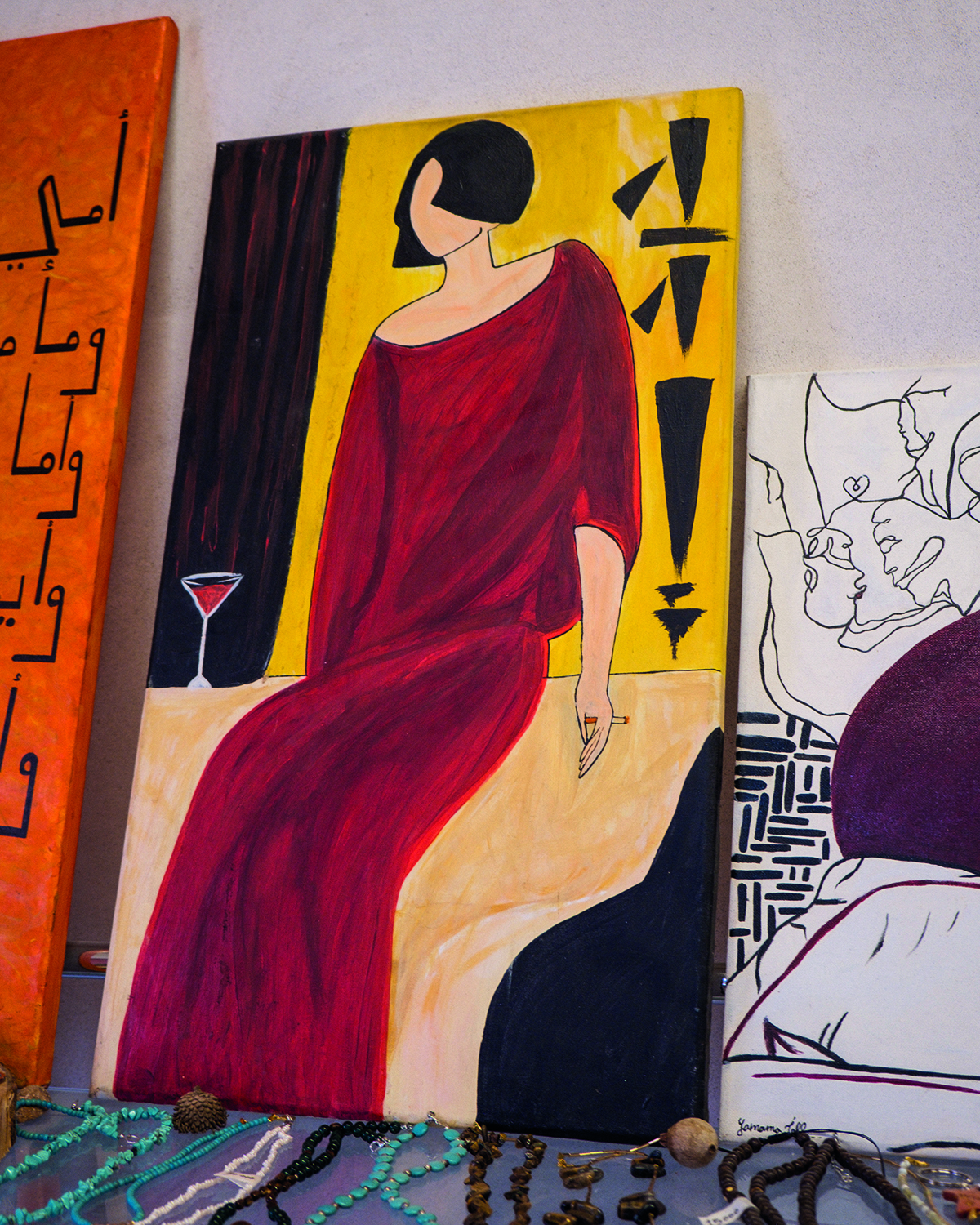
On my first trip to Iraq in 2015, I saw local construction crews rebuilding a good portion of the outside walls and erecting the Kurdish Textile Museum, devoted to the rugs and clothing of northern Iraq. By 2021, the local government had installed the Erbil Stones and Gemstones Museum and rehabilitated the Mulla Afandi mosque, the oldest mosque in the city, as well as a public hammam or steam bath. By November 2022, crews had added an amphitheater, rebuilt a burned antique shop and carved out a space for the Kurdistan Music Archive. Most importantly, Cihan University, a private, English-speaking school founded in 2007, opened a space for artists’ studios in the center of the structure.
Wandering into the Citadel on a Sunday morning, visitors will likely encounter Naja Hazali and her colleague Yamama Jaff working on a canvas or monitoring their various shops. Hazali, a former architect who spent her formative years in Iran, paints large oil compositions often involving a bull — an ancient symbol of power, fertility, divinity and wisdom — entwined with a woman. “Men are very different here in the Middle East. They have to say, ‘we are better; we are stronger than the woman,’” Hazali tells me, pointing to a painting of a bull charging at a woman. “I want to say that ‘no, we are the same; we need each other,’” she adds, moving over to a painting of a woman playing music on a bull’s horn. Both women, who wear jeans, sweaters and heavy makeup to highlight their deep brown eyes, instead of hijabs or abayas, agree that the arts scene in Iraq is improving, but that Sulaymaniyah and Baghdad are the only hubs. “Before we didn’t have women photographing or women painting or women making or creating things and now, we have this place,” Hazali says. “But in Baghdad or Sulaymaniyah, they care about it more.”
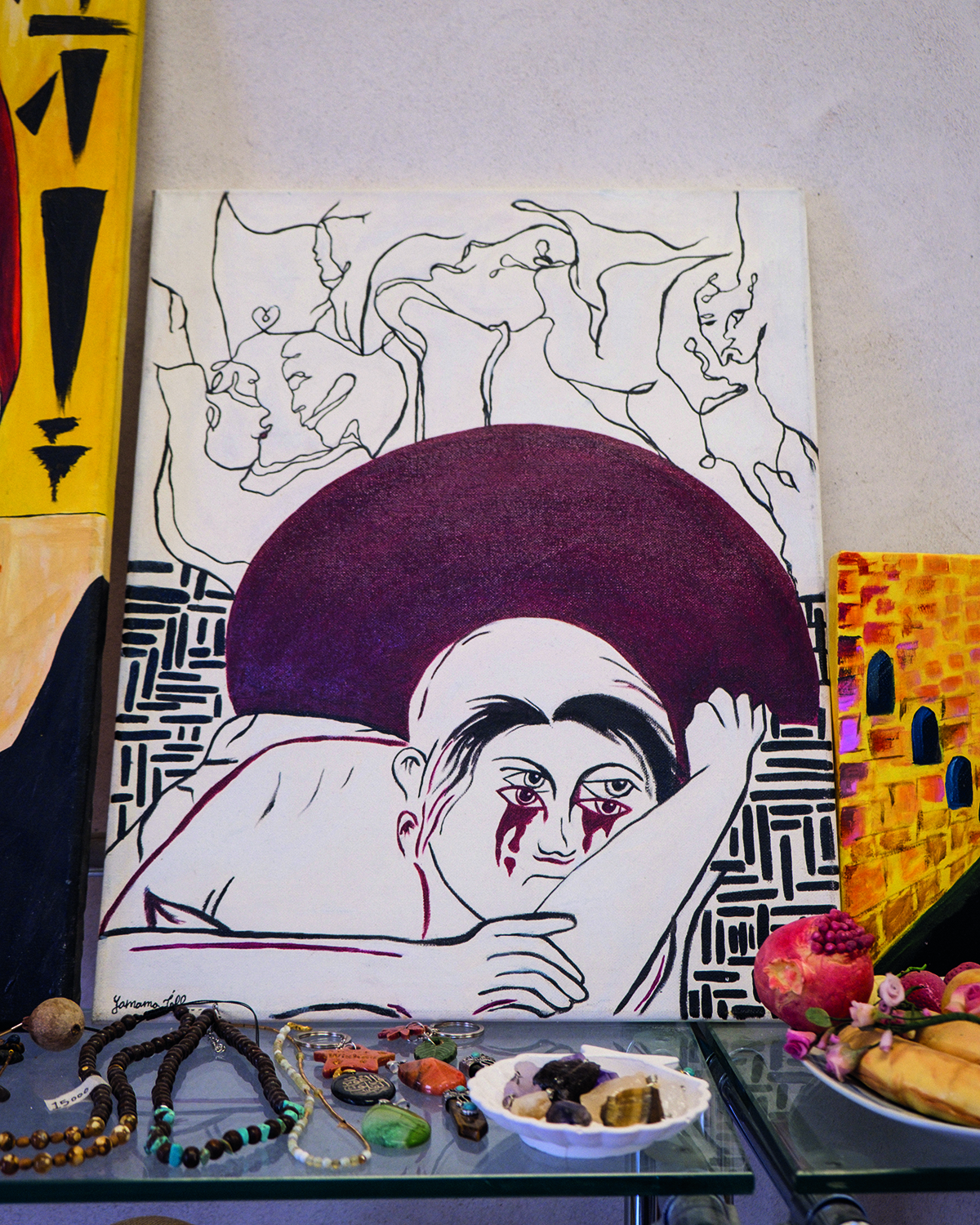
In the small shop where Jaff sells necklaces, bracelets and rings made from semiprecious stones, as well as her paintings, the young artist seconds her colleague’s point, adding “the people don’t care about the painting because of the notion of haram or that it is too expensive. We still have multiple caliphs: one says [about aniconism] ‘no problem’; one says ‘OK, but not this’; one says, ‘haram.’ I don’t care. I will create my art and people with open minds can come and find me here.”
Back in Sulaymaniyah, young children are still encouraged to become doctors, lawyers, or civil servants instead of artists, according to Abdulla. Unless parents are progressive (hers were not), girls are either married off or confined to the home — education ends after a certain age. While men and women of a certain class can sometimes study and live abroad, most western NGOs are not going to interfere in the local culture. “There are some NGOs teaching women a craft, but never art,” Abdulla says. “They are looking to use these women to elicit more donations.” Furthermore, she adds, many women are taking any creative skills they have and going into the business of beauty. Indeed, nail salons, laser hair-removal shops and Botox outfits have begun to pop up in local malls where the wealthy spend their free time. “We have lost many women this way. They do a lot to color and change themselves and aren’t focusing on making things of beauty or expressing themselves through art.”
Abdulla, who has another public installation going up this year, doesn’t have much hope for Iraq’s arts scene. The demise of XLine, once also known as the city’s “Culture Factory,” only emphasizes the uphill struggle for cultural endeavors in the country. Despite fifteen-year contracts with the local government and funding of around $3 million, plans to develop a national theater, cinema, four galleries and a museum of fine art and archaeology remain just that: plans.
“How can people be interested in something they have never seen before — that they don’t have in their own environment?” Abdulla says. “People are tired of being oppressed, but they don’t know how to express it yet.”
This article was originally published in The Spectator’s February 2023 World edition.










